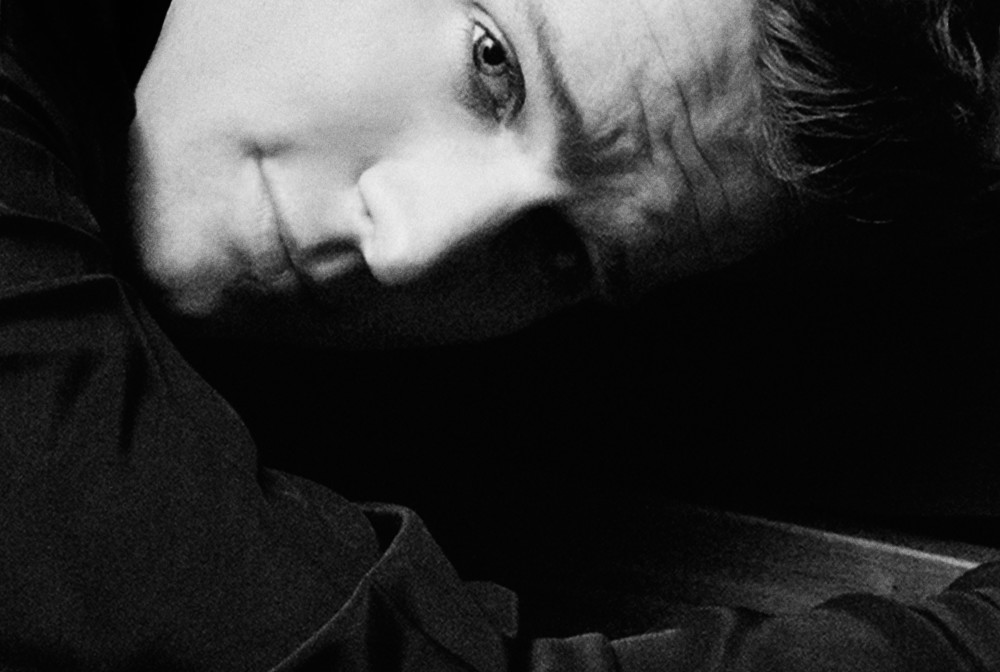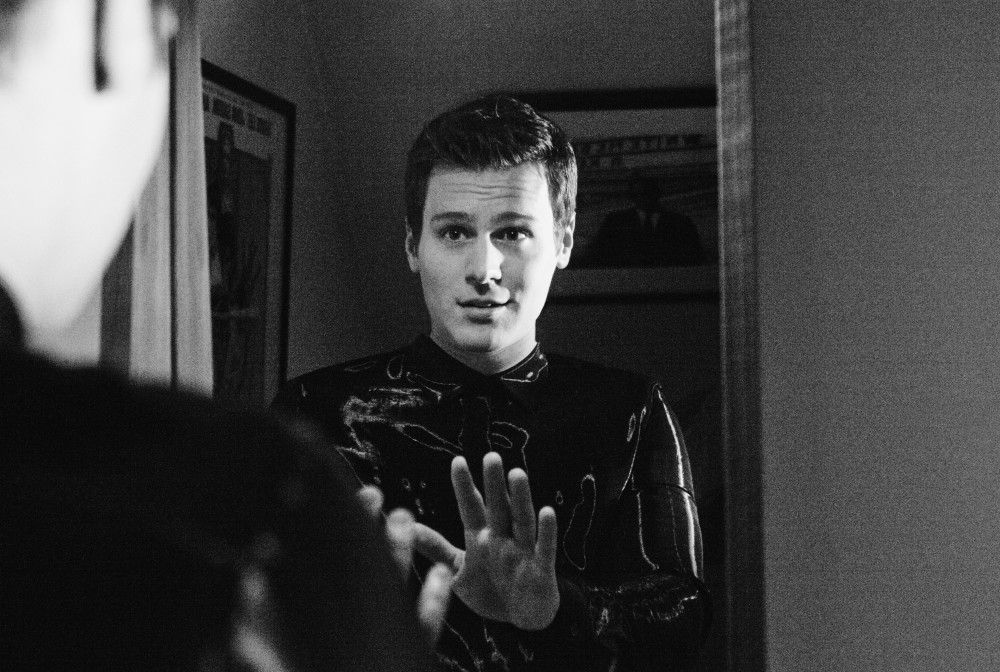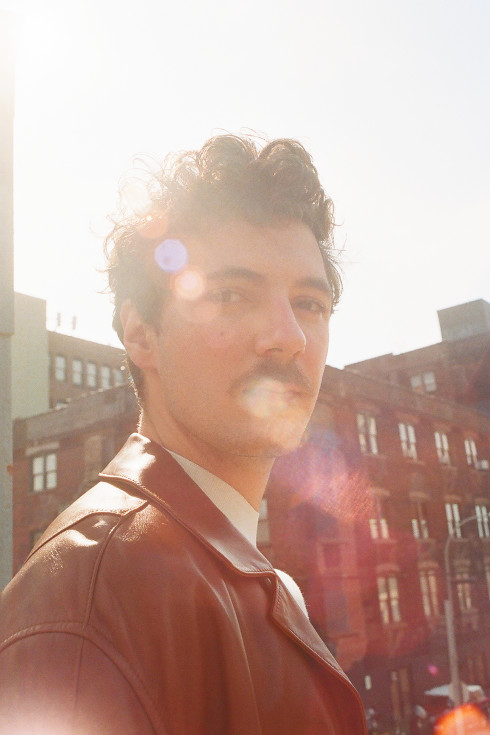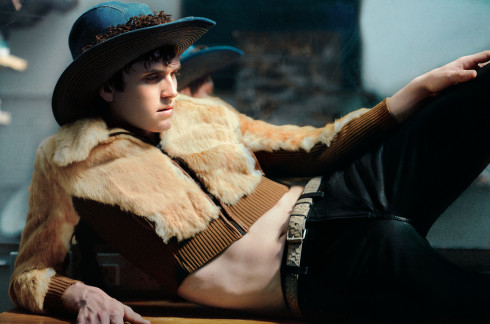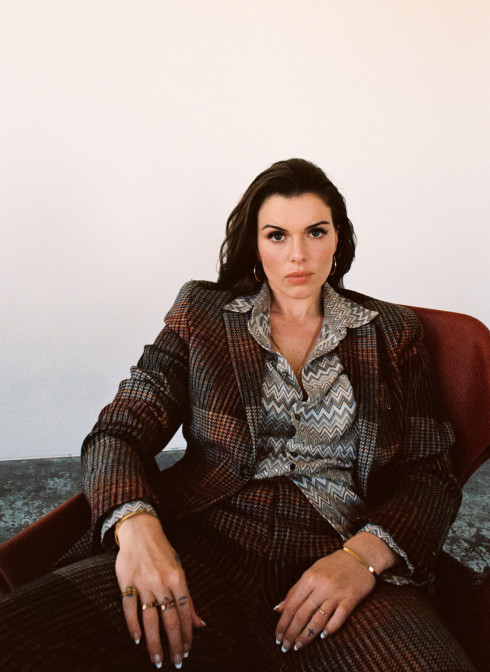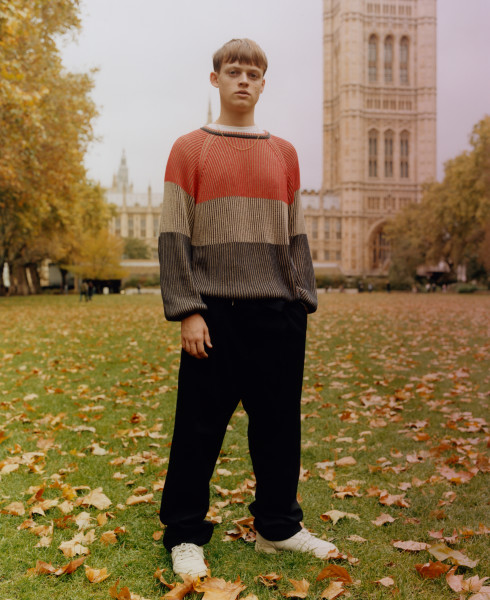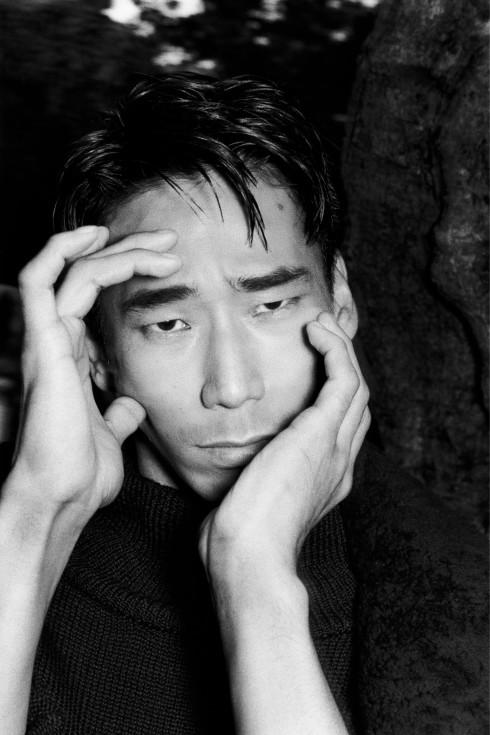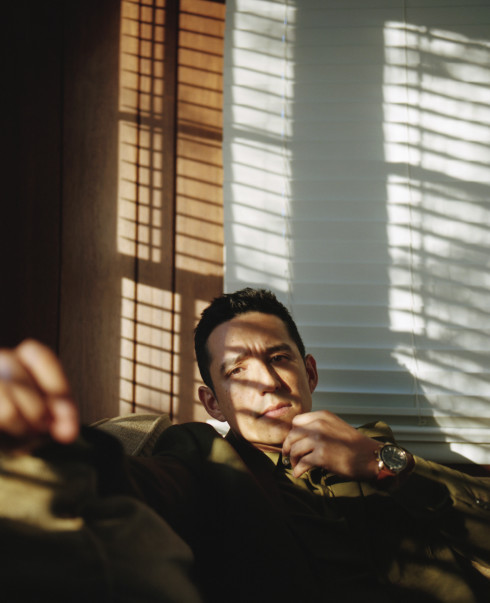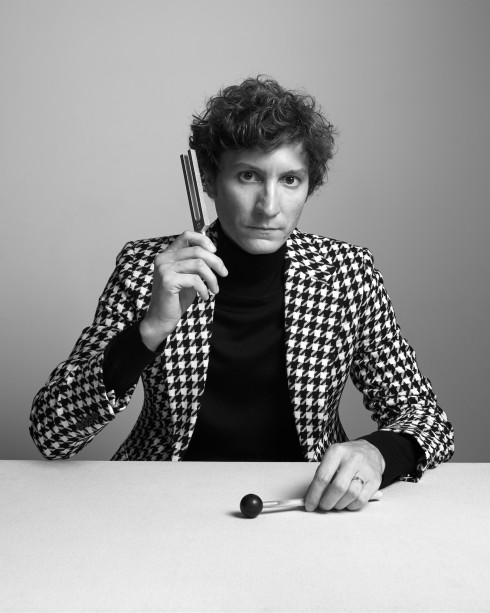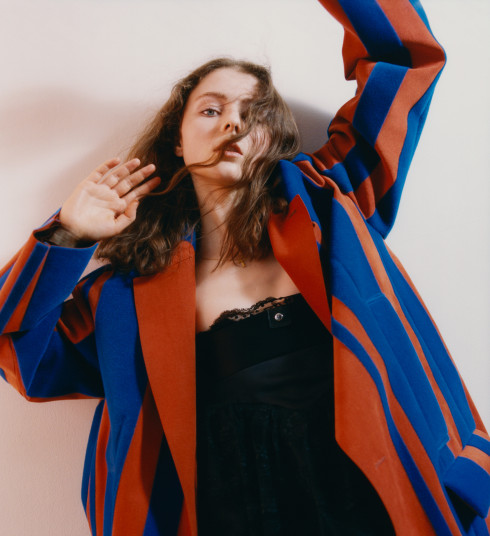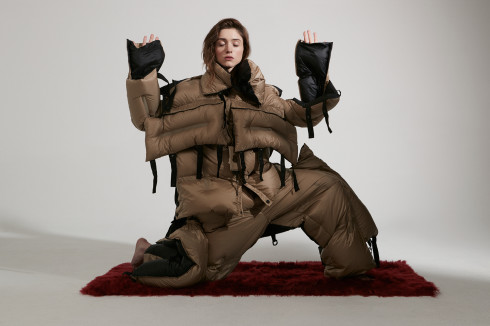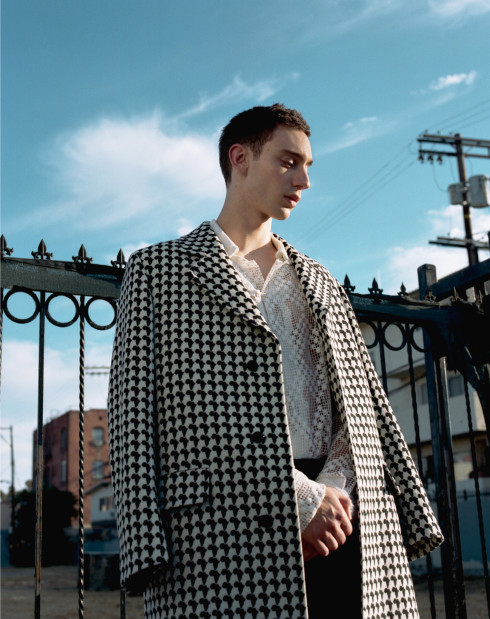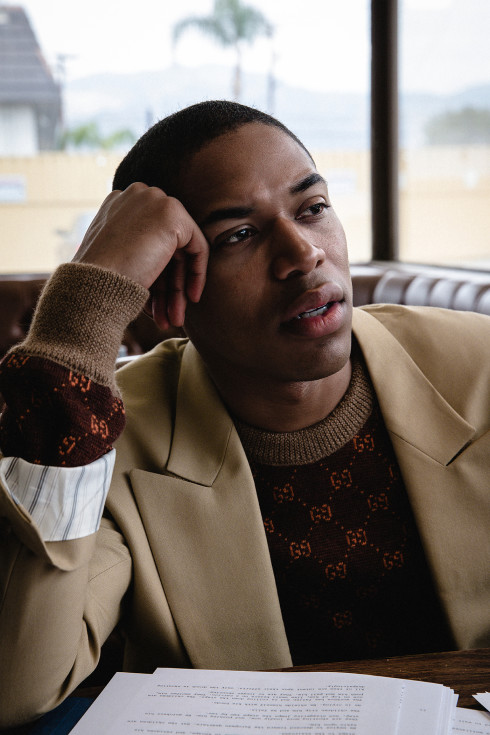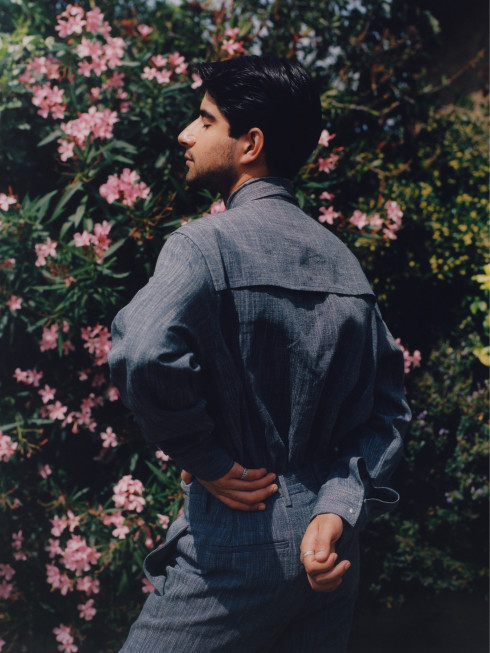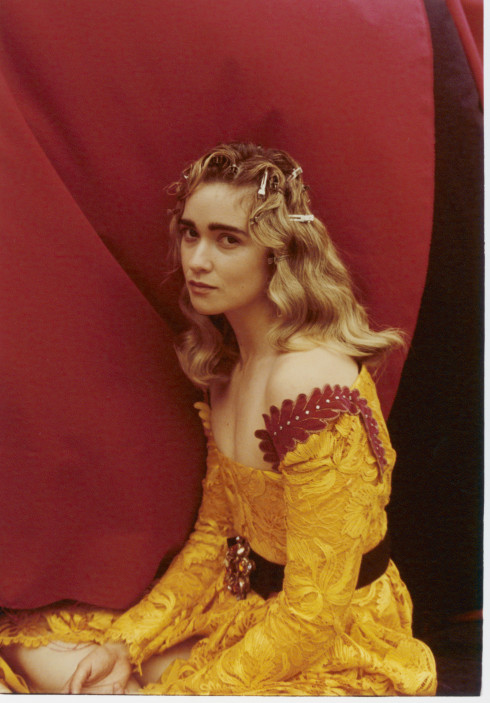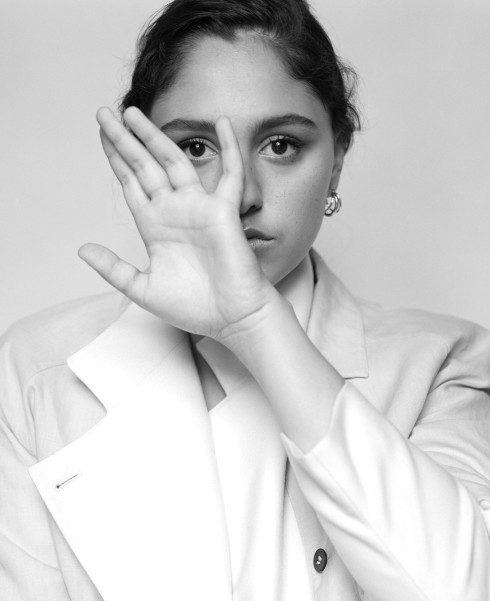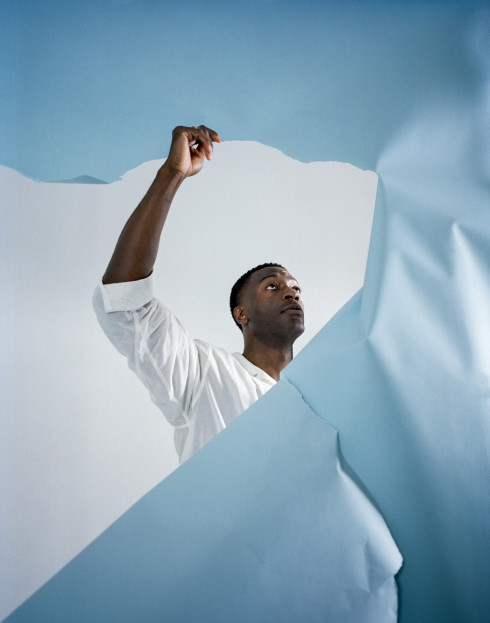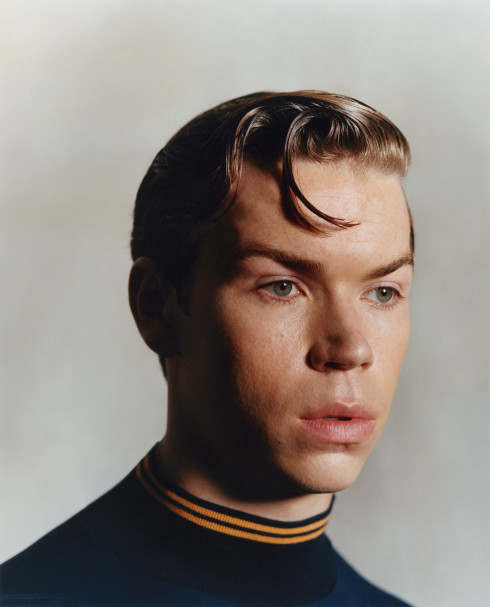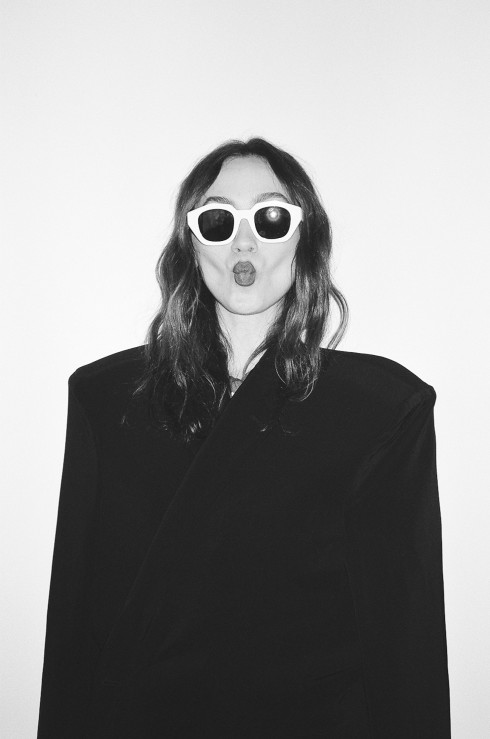- By
- Jonathan Shia
- Photography by
- Charlotte Wales
Styling by Stella Greenspan. Grooming by Charlie Taylor at BRIDGE using Living Proof. Photographer’s assistants: Ned Rogers and Kiri Wawatai. Stylist’s assistant: Arizona Muse. Shot on location at Chez Sardine, New York. Special thanks to Gabriel Stulman and Megan Butterworth.
JONATHAN GROFF
HBO’s historic show Looking returns for a second season this Sunday. Take a look back at our profile of star Jonathan Groff from the last year’s show premiere below.
For many years now, HBO has been a network of iconic shows. From the mobsters of The Sopranos and the working women of Sex and the City to the shiftless millennials of Girls and the violent medievals of Game of Thrones, the channel’s characters have been provocative, memorable, and intense. But its latest show—and perhaps its most groundbreaking—compels with its restraint.
Looking, which joined the HBO roster last month, focuses on a group of three gay friends making their way in modern-day San Francisco. The show has often been referred to as the “gay Girls”—which it follows on Sunday nights—and it does indeed bear many familial resemblances to its predecessor, which has turned creator Lena Dunham into the centerpiece of a media frenzy and the so-called “voice of a generation.” But Looking, the first mainstream show to focus almost exclusively on gay men since Queer as Folk went off the air nearly a decade ago, is revolutionary precisely because of its emphatic insistence that it’s not.
Jonathan Groff, who plays the main role of Patrick, a 29-year-old video game designer, says that the idea of Looking-as-trailblazer is not one that came into his head—or that of anyone in the cast and crew—during filming. “When we were shooting the first season, it was kind of our little secret. We weren’t really aware of the cultural conversation and it hasn’t been until the last month when people have come out with reviews and think pieces and they start holding the show up to the culture and saying, ‘How does this fit into the world? What is it saying? Is it groundbreaking? Is it not groundbreaking?’ I think that that is incredible, that its existence seems to be bringing up a lot as far as how the gay experience has been captured before and now, and how it will be captured.”
The show marks a more personal new direction for Groff as well, his first lead role on a television series after several smaller parts and a shift away from the theater, where he first gained attention. The 28-year-old actor, a Pennsylvania native, says he knew he wanted to perform from an early age, ever since playing Dorothy in The Wizard of Oz at the age of four in the back of his father’s barn. “When I was home for Christmas, my brother and I actually pulled up the video of that production. I’m like, ‘I am Dorothy Gale,’ with a full-on Judy Garland voice and then I’m like, ‘Woof woof,’ because I was also the role of the dog,” he laughs. “Ever since then I think it was on.”
Groff deferred the opportunity to study theater at Carnegie Mellon after landing a role on a national tour of The Sound of Music straight out of high school, and decided to move up to New York after nine months on the road. He spent the usual formative years waiting tables and grasping for auditions until he was cast as the lead in Spring Awakening, one of the most important and innovative musicals of the last decade. Based on Frank Wedekind’s 1891 Expressionist coming-of-age play, the show, which played Off Broadway during the summer of 2006 before transferring to Broadway for a two-year run, helped shift the direction of American theater with its difficult subject matter and undertones of rock and pop courtesy of composer Duncan Sheik. Again, Groff says that the sea change he found himself a part of was completely unexpected. “Michael Mayer, our director, always said that it would never move to Broadway because it was not commercial enough. He was always telling us that, and I thought that we would probably make a cast recording and it would be a cool, well-regarded show, but I never imagined it past Off Broadway,” he recalls. “Then when we moved to Broadway we couldn’t sell half the house for the first month until the New York Times review came out, and then suddenly we were sold-out all the time. But even then we could barely make it to the Tony Awards and then we won the Tony.”
Groff earned himself a Tony nomination at the age of twenty-two in the process before leaving about halfway through the Broadway run, the same night as his costar Lea Michele. “I remember it vividly, it’s the greatest night I’ve ever had at theater,” he says of his last performance. “When Lea came out for her entrance at the very beginning of the show, the audience leapt to its feet and did a full minute-and-a-half standing ovation for her, it was insane. It was like that whole night was a rock concert. People, young people especially, just connected to that show.”
Several other turns on the stage—Off Broadway, West End, Shakespeare in the Park—came next, as did the Ang Lee film Taking Woodstock and several episodes of Glee, which reunited him with Michele, this time in front of a national audience. “I had no intention or really desire to do film and television,” Groff says. “I moved to New York just to do theater, but then when Spring Awakening was happening, we were getting attention from the film and TV world as well. It peaked my interest and when I did Taking Woodstock, I started to become fascinated by it. When I auditioned for musicals, I would always be so excited to do the scene, but the songs would always stress me out. The acting was something I really connected to, so I felt really at home doing film and TV. I just felt more comfortable acting than I did singing.”
That ease is apparent in Looking, a gently naturalistic series that has a lived-in comfort and charm, qualities it shares with Weekend, the quiet 2011 film directed by Andrew Haigh, one of the executive producers of Looking. Groff, who is openly gay, still remembers watching that movie for the first time. “I was just blown away by it,” he says. “I felt like it was the first time I saw a gay movie that felt relatable to me personally and it felt universal to me, and I just thought it was beautiful and devastating. When I heard he was directing a pilot for HBO about gay men, I wanted to be a part of that because his sensibility and his point-of-view are so specific and I just admired him so much as an artist.”
The feeling, to hear Haigh tell it, is mutual. “Apart from being an incredibly talented actor, he has a perfect everyman quality that is so important for a show like this,” he says about Groff. “There is something so likable about him, but at the same time he has real complexity and depth.”
Those traits have helped make Groff’s Patrick, who seems generally sweet but prone to a sharp comment every now and then, into one of television’s most pleasant surprises, a gay man whose sexuality feels almost unremarkable, a standard-bearer who carries no flag. “He’s gay and part of the community, but he’s in a place where he’s trying to figure out where he fits in the community,” Groff says of Patrick. “There isn’t a prototype, and we see, in the sixth episode for example, somebody says his voicemail sounds gay and he’s like, ‘Is my voice gay? Does this sound gay to you?’ I think I, as a gay man, oftentimes ask myself, Where do I fit in the gay culture? Who am I like? All the rules are different now. I relate to his journey to find that.”
The second season of Looking premieres on Sunday on HBO.
- By
- Jonathan Shia
- Photography by
- Charlotte Wales
Styling by Stella Greenspan. Grooming by Charlie Taylor at BRIDGE using Living Proof. Photographer’s assistants: Ned Rogers and Kiri Wawatai. Stylist’s assistant: Arizona Muse. Shot on location at Chez Sardine, New York. Special thanks to Gabriel Stulman and Megan Butterworth.

